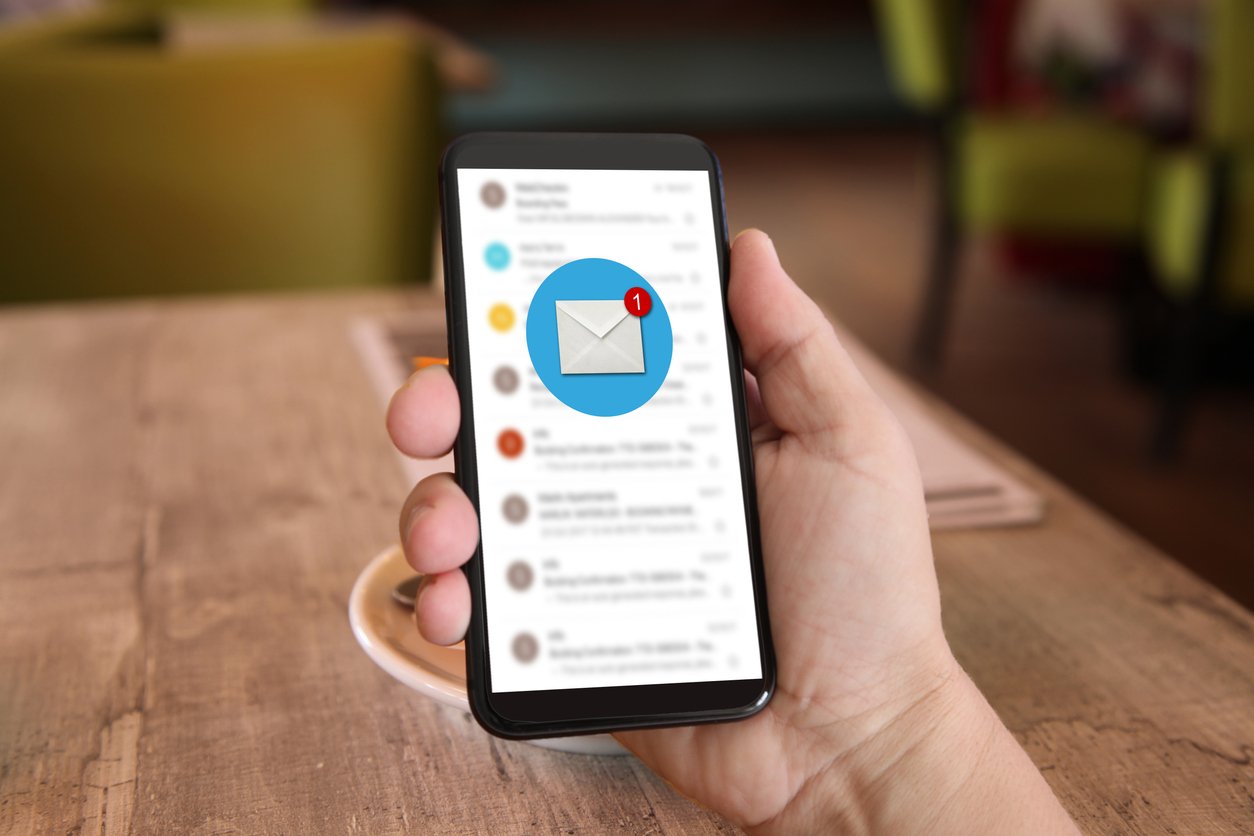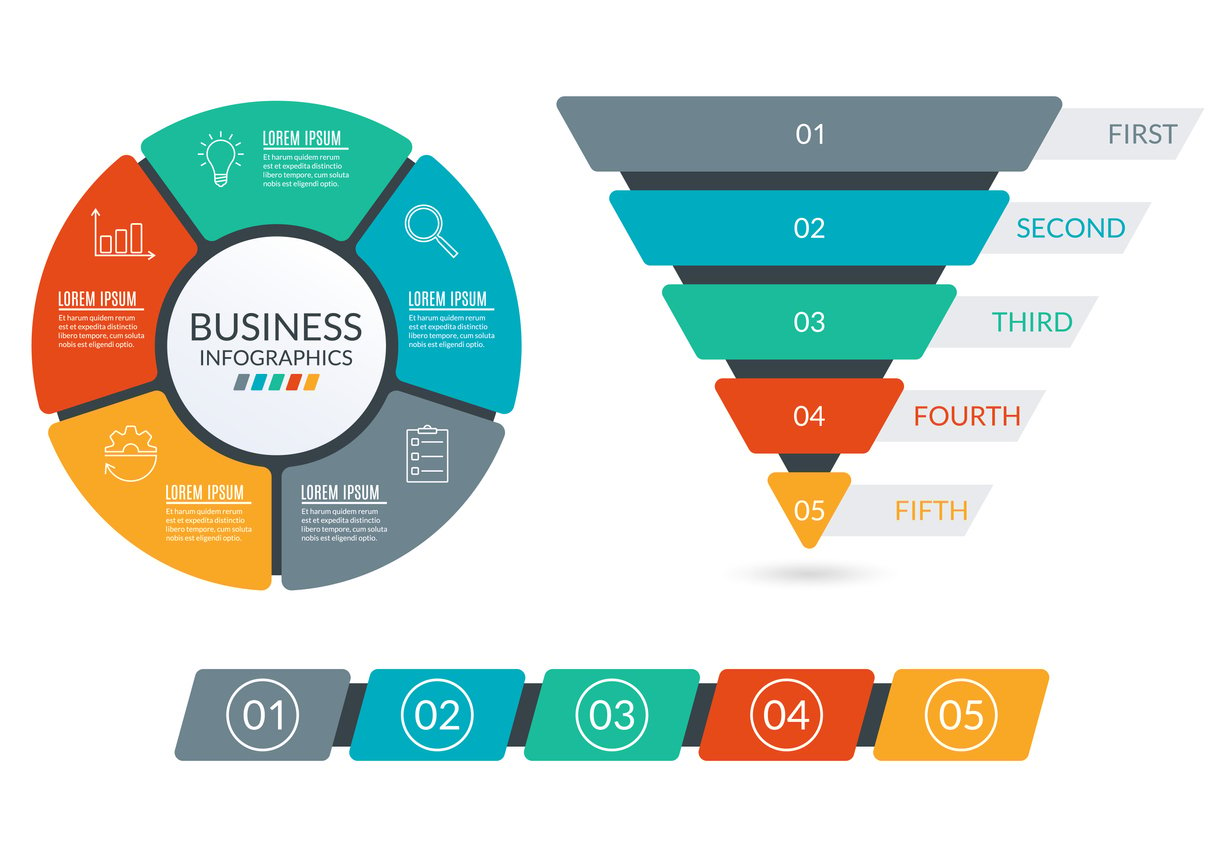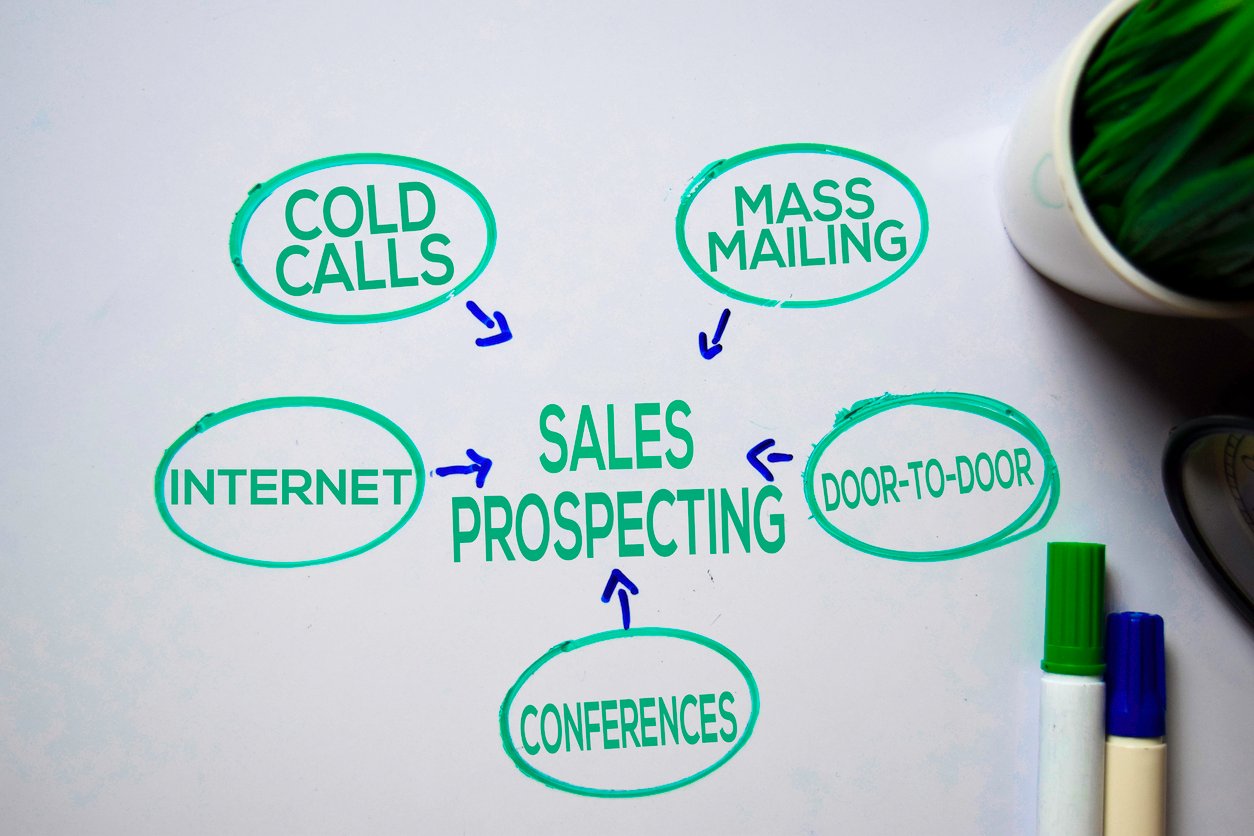
5 Creative Sales Pitch Ideas For Seasoned Sales Professional
 Updated on
Updated on
By Ringy
Table of Contents
Table of Contents
Let's face reality. Sales are hard.
But even so, some salespeople are still able to consistently earn sales and smash their quotas. So how do they do it?
Well, it's all in the pitch (not the hips).
With the right sales pitch, you can show your customer that you not only understand their problem but you have a solution ready to go.
How's that for a hole-in-one?
What is a Sales Pitch?
The standard sales pitch definition refers to when a salesperson explains a product or service to a customer and explains how and why the product is a solution to the customer's problem.
Sales pitch scripts can be delivered in-person one on one (door-to-door sales) or to a group of people (potential investors in a boardroom) or through phone, video chat, or email.
Regardless of where or how you're delivering your pitch, your sales pitch presentation needs to be clear and concise and should only be one to two minutes long. This is why a good sales pitch can be referred to as an elevator sales pitch or speech, in that you can say your whole spiel during the length of an elevator ride.
Sales Pitch Framework
A well-structured sales pitch is the cornerstone of converting leads into customers. It's a concise presentation that highlights the value your product or service brings, addressing the specific needs of the prospect. Here's a breakdown of a strong sales pitch framework:
- Prospect Research: Before crafting your pitch, delve into your prospect's world. Understand their industry, company size, goals, and, most importantly, their pain points. Researching allows you to tailor your pitch and speak directly to their needs.
- Hook & Problem Agitation: Start strong! Capture the prospect's attention with a thought-provoking question, a surprising statistic related to their industry's challenges, or a relatable anecdote. Once you have their ear, delve into the problem they face. Agitate the pain point and emphasize the consequences of inaction.
- Value Proposition: Here's where you introduce your product or service. Position it as the answer to their problems. Focus on benefits, not just features. Explain how your offering will improve their situation and make their lives easier.
- Social Proof & Differentiation: People trust others' experiences. To build credibility, showcase social proof through testimonials, case studies, or client logos. Then, differentiate yourself from the competition. Highlight unique features or superior customer service that set you apart.
- Objection Handling & Next Steps: Be prepared for objections. Listen attentively and address them directly, providing solutions and additional information. Finally, guide the conversation towards the next steps. This could be a call to action, a product demo, or a proposal.
Types of Sales Pitches
No sales pitch is created equal, and throughout the years, pitches have evolved to be more creative, engaging, and overall better at garnering a good reception from your customers. Because we communicate in so many different ways, it makes sense that the sales pitch has also branched out into different types.
Here are the most common types of sales pitches:
Elevator Sales Pitch

Your elevator pitch not only needs to be concise enough for a typical elevator ride, but it also needs to explain the problem, why your product is the solution, and what success would look like with your product in less than a minute.
If this sounds tough, that's because it is. A good elevator sales pitch needs practice and refining. One way you can start is by creating a story: did another customer get amazing results from using your product? Do you have a personal anecdote where you were like, "The product I sell would definitely solve this problem that I'm having"? A good story is a great way to weave in all the good bits about your product that you'd like to convey to your customer, as you already have a beginning and end to keep you on track.
Email Sales Pitch
Taking up real estate in someone's email inbox when they're already inundated with emails means that the email pitch needs to be something special to get noticed.
The email sales pitch should focus on moving the relationship with your customer forward rather than direct selling (unless you're literally promoting a sale, i.e. an eCommerce website). It should have an eye-catching subject line that entices your customer to click, which is probably the most difficult part of writing the entire email.
Here are a few sales pitch email examples of great subject lines that are based on relevant current events that the customer is experiencing but are still straightforward and clever:
|
Email pitch template |
Why it works |
Example |
|
How much do you know about [topic/brand/product/service]? (source). |
This subject line asks an open-ended question and entices the customer to want to learn more. Use it to position your product as the solution to a problem that you know your customer has. |
"How much do you know about running?" Then your email could lead to information about how your shoe provides the best support for your feet when running marathons, etc. |
|
"X people [involved in a decision]" (source). |
Stats can be powerful and convincing, as they go beyond an assumption and provide data to back it up. |
"68% of Canadians don't have tenant insurance." Then your email could introduce your insurance product and continue telling a story as to why it's important to have. |
|
"[Customer's name], you only have X day(s) to cash in on this offer." (source) |
The fear of missing out (FOMO) is a powerful thing. Customers don't want to miss out on a good deal on a product they've been eyeing. |
"Lisa, get 40% off jeans today only" |
The great thing about the email pitch is that you can save the ones that land well as templates for future use and simply adjust the copy as needed to suit your new customer.
Door-to-Door Sales Pitch

If the first thing you thought of when reading "door-to-door sales pitch" was closing the blinds and turning out the lights upon spotting a guy with a clipboard at your door, just know you're not alone.
It might be considered an old form of sales, but the truth is that companies wouldn't bother with door-to-door sales if they didn't work. If anything, they drum up awareness that your product exists and give salespeople a lot of chances to practice and refine their pitch and their overall approach to sales.
According to one salesperson who got their start with door-to-door sales, the experience taught them valuable skills with regards to teamwork, refining processes, integrity, and developing a thick skin.
Cold Call Pitch
With a cold call pitch, your customer likely wasn't expecting your call, so the chances of them slamming down the receiver (more of a figure of speech these days) are much higher. Even so, cold calling is still an effective way to sell, with the majority of C-level and VP buyers saying they prefer to be contacted via phone. However, you'll still have to convince your prospects that you have something to sell them that's worth their time before you can even start your pitch, and that's where the creativity comes in.
Starting with a story or anecdote might be a good idea, but an effective cold call should get your prospect to pause and want to learn more.
Here's an example of an interesting (and funny) cold call method that works for this Salesforce employee:
"Hi [customer name], this is [name] with [company]. You were not expecting my call. Want to hang up now or roll the dice?"
Social Media Sales Pitch
There's a myriad of ads on social media from people trying to sell you something, so it's easy for a subpar pitch to get lost in the shuffle (or scroll).
Crafting a good social media sales pitch requires careful planning, including research into which platform(s) your audience hangs out on, plus weaving your idea into a relevant, actionable post that will resonate with your target audience.
In this case, knowing your customer's business and industry is just the first step, you'll want to get to know the main influencers in their industry and where these people post their content online. One of the ways you can do this is by using a social listening or audience research tool that helps you quickly identify these important influencers. From there, you browse posts and find out what type of content resonates with your target audience, and use it as a starting point for creating your own social media sales pitch.
How to Write a Sales Pitch

The perfect sales pitch won't often come easy. It's the cumulation of knowing your customer, understanding their pain points, and crafting a clever story that resonates with them. If you're sitting down with pen to paper trying to come up with the perfect sales pitch and are falling short of ideas, then it's time to take a step back and do your homework first.
Before you Start Writing Your Sales Pitch
The first step that you should take before writing your sales pitch is to research your customer. Learn about the company by browsing through its website and social media, but also take a look at its competitors and its industry as a whole so you can understand where your customer fits within it.
This prospect research is important because it gives you context as to how you can frame your sales pitch, and allows you to get more information about your target audience within a large company. In other words, who you should reach out to for the best chance to land a deal (someone at the executive level, or a sales manager) and what their pain points are likely to be.
Then, and only then can you start writing your sales pitch.
Writing Your Sales Pitch
A typical sales pitch should include:
- A summary of the problem
- The solution to that problem
- Your value proposition (this is where you pitch your product)
- What will happen if the customer doesn't solve their problem
However, it's not enough to go directly from "here's the problem" to "here's the solution to that problem". Instead, you need to frame the problem and the solution in a story or anecdote that the customer can relate to, even if it's just a few words.
Here's an example:
Bob, the owner of a small insurance firm, needs a CRM to manage customer data. Everyone keeps recommending one of the bigger CRM providers like Salesforce, but it's out of his firm's tech budget.
Enter Ringy.
"I see you're looking for CRM solutions for your insurance firm. What providers have you been looking at?"
Bob: "My colleagues have recommended Salesforce, the software looks great. We might have to bite the bullet and get it."
Ringy: "I understand that. Salesforce is a great CRM, but it can be expensive, especially if you have a lot of users. What if you could get a CRM for one set monthly price, regardless of how many users you have?"
Bob: "That would be amazing. But we don't want to lose out on features."
Ringy: "Our subscription includes unlimited users. And yeah, you definitely don't want to skimp out on features that you'll likely need. I just had an insurance firm the other day that had the same concerns, and they've been loving our software so far, especially the integration with Google Calendar, which makes it easy to schedule calls with underwriters. After all, you wouldn't want to lose out on customers because of schedule conflicts."
Bob: "No, we wouldn't."
Ringy: "I'll tell you what. Let's schedule a demo and I can walk you through our software and how it'll help your business."
Bob: "That sounds great."
The purpose of your pitch may be to persuade the customer to buy your product or service, but there's one caveat: especially in a B2B setting, the path from interest to buy won't often be achieved in one conversation with the customer. Instead, you're likely to have a lot of conversations with a prospect before they buy. That's why this pitch focused on getting the customer to the next step (scheduling a demo) rather than going straight to the purchase phase.
This means you'll need to tailor your sales pitch carefully to suit your business's typical sales cycle, and consider how you'll move your customer through the different stages of your conversations.
Essential Questions to Ask About Your Sales Pitch
Delivering a polished sales pitch is crucial, but it's equally important to assess its effectiveness. Here are some key questions to ask yourself to refine your pitch and maximize its impact:
Clarity & Focus:
- Does my opening clearly grab attention and introduce the problem the prospect faces?
- Is my value proposition clear and concise, highlighting the benefits my offering provides?
- Is my pitch focused on the prospect's needs, or am I rambling about features?
Targeting & Relevance:
- Is my pitch tailored to the specific prospect and their industry?
- Does my pitch address their most pressing pain points?
- Is the language I use relevant and easy for the prospect to understand?
Engagement & Flow:
- Does my pitch encourage interaction and questions from the prospect?
- Is the flow logical and easy to follow?
- Does my pitch end with a clear call to action?
Impact & Differentiation:
- Does my pitch effectively convey the value proposition and differentiate me from competitors?
- Does my pitch create a sense of urgency or desire for the prospect to act?
- Will my pitch leave a lasting impression on the prospect?
By asking these critical questions and refining your pitch accordingly, you'll be well on your way to delivering presentations that resonate with your audience and convert prospects into customers.
Good vs. Bad Sales Pitch Comparison
Here are some key points to remember that set a good sales pitch apart from a bad one:
|
Good Sales Pitch |
Bad Sales Pitch |
|
Clear and concise |
Is plagued with jargon and acronyms |
|
Creates a sense of urgency |
Is more of a lecture than a conversation |
|
Tells a story |
Has no examples, stories, or anecdotes |
|
Uses the customer's vertical to explain the problem and how your product will solve it (the "what's in it for me?") |
Explains the problem and solution without considering the customer's situation |
|
Shows that the salesperson has researched the customer |
Includes little to no customer research |
5 Creative Sales Pitch Ideas

While the best sales pitch should definitely follow some sort of formula that includes the problem, solution, and value proposition, that doesn't mean you can't get creative with different sales pitch ideas.
There are a lot of different ideas you can apply to your sales pitch, including:
- Use emotional appeal
- Switch up the type of sales pitch
- Use personalization
- Tell an interesting story
- Sell with social proof
Use Emotional Appeal
Emotional appeal is one of the strongest devices that we can use to persuade someone in a conversation, so it's no surprise that emotional selling is a good tactic in sales. With an emotional sale, you're appealing to your prospect's sense to elicit a reaction.
One of the ways you can trigger emotions in your prospect is by telling a story. Let's say that you had a customer who had a not-so-pleasant experience with a competitor. That story might provide good leverage to frame your sales pitch around so you can trigger a response like "I don't want to go through that, so I'll just go with your product."
Switch up the Type of Sales Pitch
There are a few types of sales pitches that are popular, and depending on the situation, you should definitely switch up your standard formula. For example, if you reached your prospect through cold calling, maybe send them an email in a few days with a link to a relevant blog post on your website to keep them interested.
Use Personalization
Many of the best sales pitches are done online these days, which means it can be more difficult for prospects to feel like they're getting a real message from a real person. In emails, be sure to address your prospect by name (and be sure to spell it correctly). With automated email marketing messages, consider telling the customer who is emailing them. If it's Clayton from Marketing, then say that in the email. This provides a more personalized connection with your prospect.
Tell an Interesting Story
Stories can be powerful. We tell stories for a ton of reasons, from entertainment to scaring our kids into not going into the woods at night, so why not use an interesting story for sales?
A good story doesn't have to be fancy or intense, it just needs to be targeted (i.e. relevant to your customer) and believable. The easiest way to use storytelling in sales is to use a real story that happened to you or someone else and work on the relevance to your customer's pain point.
Sell with Social Proof
Statistics are another example of a powerful tool for selling. If you have a stat ready to go from a reliable source, your customer knows you're not just making things up: you have proof. This can go a long way in building trust and credibility since not only are you spouting facts, but your customer knows you've done your research.
Sales Pitch Examples Per Industry
Ever watched one of those shows like Shark Tank or Dragon's Den and absolutely loved or hated a sales pitch you heard? Us too.
Sometimes, the best way to learn the difference between a good sales pitch and a bad one is to look at examples. We've compiled a list of great sales pitches from different industries for your consideration.
Insurance Sales Pitch Examples

- Geico
https://www.youtube.com/watch?v=G_nUqqARXtQ
The happy lizard from Geico is definitely one of the most recognizable creatures to ever grace T.V. commercials. This Geico ad starts with the gecko walking along a beach, seemingly talking to itself about the different options that customers have to reach Geico's team. They then save their standard sales pitch, "save 15% or more on car insurance," for the end of the video.
Why it works: It appeals to customer convenience by saying that Geico can be contacted "day or night" on the device of the customer's choice, making it even easier for the customer to reach out.
- Ladder Life Insurance
This commercial tells a story in a Final Destination sort of way but injects enough humor that it comes across as funny instead of scary. The dad arrives home and avoids a series of unfortunate targets from his family with ease. Ladder finishes off the ad with a funny pitch, "life insurance so good, they'll want you dead."
Why it works: This ad works because it tells a full story in less than a minute and does a great job of using humor to lead into the final sales pitch.
Car Sales Pitch Examples
- Ford
https://www.youtube.com/watch?v=CLIqYbeoEss
Ford has done a great job of aligning their brand with an adjective. In this case, Ford = tough, and this commercial is no exception. It frames the message of the story, working hard, innovation, etc., around the main product beautifully. At the end, you get the quintessential message "Built Ford Tough" to finish off the ad.
Why it works: Ford's commercial uses emotional appeal (the American dream, revolutionizing transportation, etc.) and a direct approach to reaching their audience, meaning they've done their homework and understand who their customers are.
- Tesla
Tesla's ad is appealing to a very different audience when compared to Ford. Tesla is after the dreamers, the tech enthusiasts, the people who dream about humanity going to space.
Why it works: Starting with the title of the ad, "Imagine", Tesla is already setting up the viewer to dream about seeing themselves driving this car. The rest of the ad, which is filmed like a movie montage, continues to appeal to the viewer's daydream by describing features that sound futuristic and cool.
Retail Sales Pitch Examples
- Scrub Daddy
https://www.youtube.com/watch?v=ggi3yfUv0Mo
Scrub Daddy's Shark Tank sales pitch is often referred to because, let's face it, it works. In less than a minute, the product is described, demonstrated, and positioned as the best solution for washing dishes. As the camera pans to the faces of the Sharks, each of them is seemingly enjoying this pitch.
Why it works: Although the salesperson is speaking pretty fast, he manages to highlight every amazing feature of the product, one after the other, without breaking a narrative flow. In the end, there's nothing really left to be said except, "Let's make a deal."
- Knixwear
https://www.cbc.ca/dragonsden/m_pitches/knixwear
Knixwear is a women's underwear brand that provides a solution for a series of difficult issues — sweat, odor, and bladder leakage with a product that is still aesthetically pleasing.
Why it works: At the beginning of the pitch, it seems business as usual, but later on, the founder emphasizes the importance of the product and uses customer accounts to showcase how the product has changed the lives of her customers. This is a combination of both emotional appeal and social proof to back it up.
Conclusion
Creating the perfect sales pitch requires careful planning alongside careful research of your target customer. It's not enough to simply tell your customer about your product and how it will solve all their problems, you have to show them how it will use stories, anecdotes, statistics, and more to really resonate with them.
Getting to know your customers might be the first step in crafting a great sales pitch, but if you don't have the data to back up your assumptions, how can you be sure you really do know your customers? Ringy is a Sales CRM that helps you store and manage customer data, including keeping track of communications, so you can get the full picture of each and every one of your prospects.
Want to give Ringy a try? Book a demo with us today.

Skyrocket your sales with the CRM that does it all.
Calling? Check. SMS? Check. Automation and AI? Check. Effortlessly keep in touch with your customers and boost your revenue without limits.

Take your sales to new heights with Ringy.
Sales in a slump? Ringy gives you the tools and flexibility you need to capture leads, engage with them, and turn them into customers.
Subscribe to Our Blog
Enter your email to get the latest updates sent straight to your inbox!
Categories
Related Articles
































































































